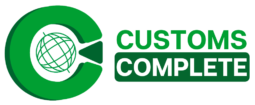CUSTOMS CLEARANCE ANTWERP PORT
Customs Clearance at Antwerp Port is essential for businesses trading in and out of Europe, as the port serves as a major entry point for international trade and offers excellent access to the European market. Its advanced infrastructure and close cooperation with customs authorities help ensure efficient customs procedures and reduce delays.
Handling millions of tons of cargo annually, Antwerp’s strategic location and customs expertise make it a key hub for smooth import and export operations. For more information, visit the Port of Antwerp Official Website.
Customs Clearance at Antwerp Port: Steps
Customs clearance requires a number of important steps from arrival to release. To clarify the process, here are the main stages involved:
- Pre-Arrival Docs: Importers must submit necessary customs declarations electronically before the shipment arrives. Required documents typically include the Bill of Lading, Commercial Invoice, Packing List, Certificate of Origin, and any relevant licenses or permits.
- Customs Declaration: A customs declaration must be lodged electronically using the Belgian customs system (PLDA). This includes details about the goods, value, origin, and tariff classification. Importers/exporters often appoint a customs broker for this.
- Inspection & Risk Check: Customs may inspect goods or request more information. Risk-based controls at Antwerp reduce unnecessary inspections. Rules follow EU customs regulations – see the EU Taxation and Customs Union.
- Duties & Taxes: These are based on declared value and classification. Import duties, VAT, and any applicable taxes must be paid before release. Exporters may qualify for exemptions based on trade agreements.
- Goods Release: Once documents are accepted and taxes paid, goods are cleared for collection or onward transport. Efficient logistics at the port support quick delivery.
Importer Requirements
To import via Antwerp, businesses must meet standard EU customs rules and ensure documents and procedures are complete. Importers should follow these requirements:
• EORI Number: An Economic Operators Registration and Identification (EORI) number is mandatory for customs operations within the EU. You can apply via the EORI Registration Portal.
• Accurate Classification: Correct HS codes must be used to determine duty rates and ensure compliance.
• Compliance with EU Rules: This includes health and safety standards, environmental controls, and product-specific regulations.
Exporter Requirements
Exporters using Antwerp Port must complete all customs formalities and ensure the goods meet both EU export rules and the requirements of the country of destination. Key steps include:
• Submit export declarations before goods leave the EU. These declarations must be filed electronically using Belgium’s customs platform (PLDA).
• Check destination country rules to make sure the goods are accepted at arrival — including documentation, packaging, and any labelling requirements.
• Use an ATA Carnet or obtain an export license if the goods fall under dual-use, cultural, or military items, or if they are temporary exports.
Common Issues at Antwerp Port
Even at an efficient port like Antwerp, common mistakes can lead to shipment delays or fines. Frequent problems to avoid include:
- Incorrect or incomplete documentation is a frequent cause of delays. All documents must be consistent and submitted in the correct format.
- Wrong tariff classifications (HS codes) can lead to overpayment or underpayment of duties — both of which trigger compliance concerns.
- Delays in settling duties and taxes can hold up clearance, especially for high-value or high-risk goods.
- Outdated regulatory knowledge means companies miss new rules or changes in documentation standards.
Benefits of Customs Clearance at Antwerp Port
Antwerp combines scale, connectivity, and digital infrastructure, making it one of the most trade-friendly ports in Europe. The main advantages are:
- Fast customs procedures with electronic declarations and risk-based controls that reduce delays.
- Direct access to European markets, with excellent rail, road, and inland waterway connections.
- Reliable digital systems for tracking, clearance, and compliance management.
- Value-added services, including bonded warehousing, temporary storage, and logistics support for complex shipments.
Tips for Smooth Clearance
To avoid delays, businesses can follow these practical tips:
- Prepare and submit documents as early as possible to allow for verification before arrival.
- Register for an EORI number well in advance if your company doesn’t already have one.
- Collaborate with experienced customs agents who understand Belgian and EU customs procedures.
- Monitor regulatory updates and tariff changes to avoid missteps.
- Account for inspection time in your logistics planning to avoid pressure on delivery schedules.
How Do I Contact a Customs Agent to arrange Customs Clearance at Antwerp Port?
When you are ready to customs clear your goods, you can contact one of our agents using the form below and we will assist you.
CONTACT CUSTOMS COMPLETE
Fill out the form below and we will get back in touch with you ASAP
